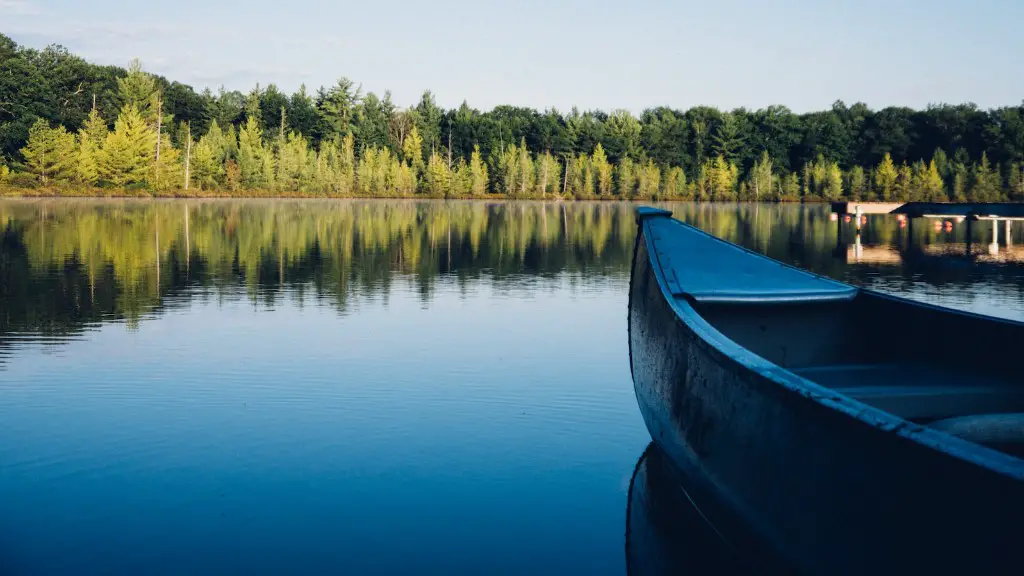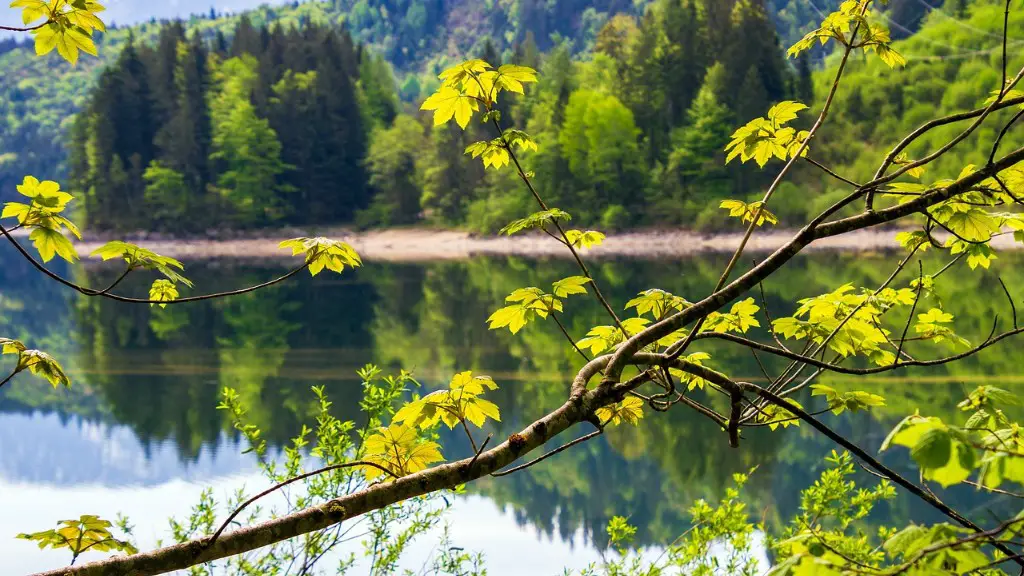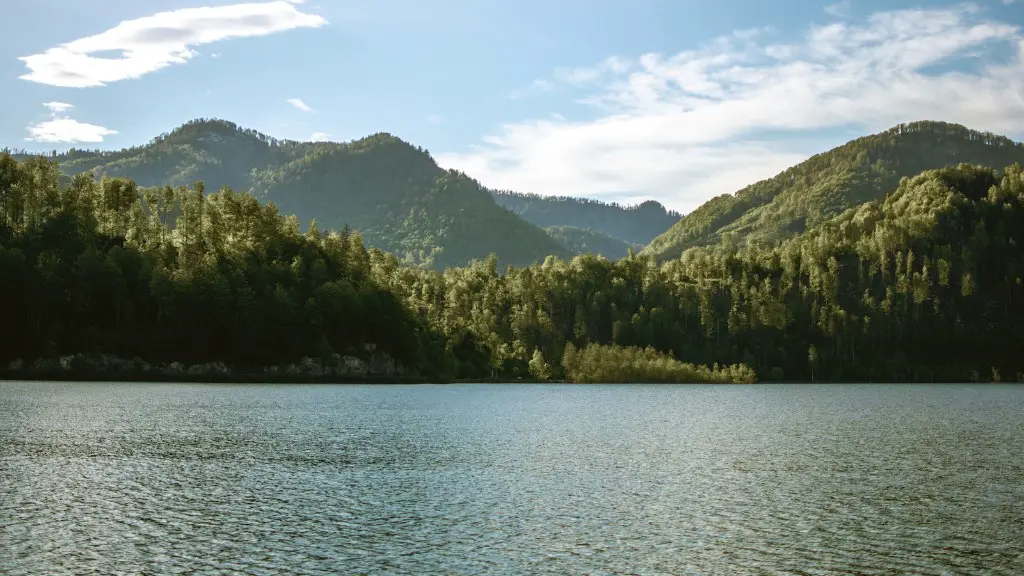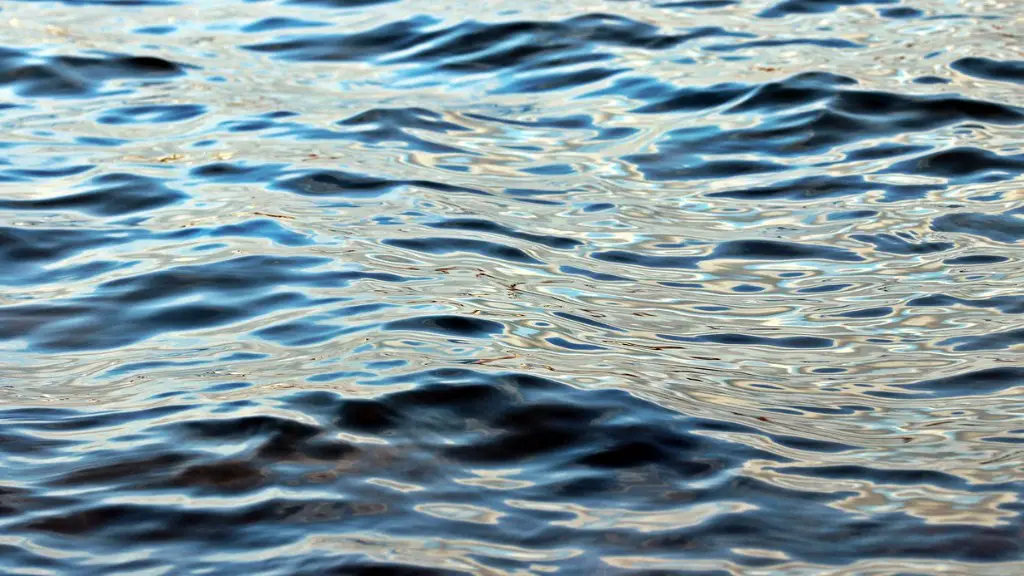Overview
Lake Superior is the largest and the coldest of the five Great Lakes in North America. It is the second deepest freshwater lake in the world, and it is known for its intense winter weather. But Lake Superior is also quite cold during the summer months. In this article, we will explore how cold Lake Superior is in summer, what that means for its ecosystem and surrounding areas, and how tourists can safely enjoy it.
Lake Superior’s Summer Temperature
The average summer temperature of Lake Superior is in the mid-50s Fahrenheit, but temperatures can range anywhere from the upper-30s to the upper-70s. The coldest effects from the lake typically occur from mid-May to late June. The depth of the lake has a major influence on its temperature, as the deeper water has a slower rate of warming than the shallow waters.
During the first few weeks of summer, the surface temperature of Lake Superior is typically the coldest. It takes much longer for the deeper layers of the lake to reach similar temperatures. The deeper layers of the lake also exhibit some seasonal temperature variation. The layer of deepest waters (about 100 feet below the surface) is relatively cold for most of the summer, but the shallowest waters (between 0 – 30 feet deep) tend to be the warmest.
Impact of the Cold Water on the Lake’s Ecosystem
The cold temperatures of Lake Superior can have a significant effect on the ecosystem of the lake. Cold water fish, such as trout and whitefish, thrive in the cold waters of the lake and are important to the food chain. The cold waters are also important habitat for migratory birds.
The cold water temperature is also important for preserving the lake’s natural beauty. The cold temperatures help prevent the spread of invasive species and keep the lake free of algae blooms. The cold water also keeps the lake clean and free of sediment, which helps maintain its visibility, allowing for a clearer view beneath the surface.
How Tourists Can Enjoy Lake Superior in the Summer
The cold waters of Lake Superior present some challenges, but they can also be enjoyed via outdoor recreation. Swimming and boating in the lake are popular activities during summer months. But tourists should plan their activities carefully and wear the right clothing, as the water is often quite cold. Wetsuits, thick neoprene clothing, and other warm, water-proof wear should be considered when engaging in water activities in the lake.
Tourists can also enjoy the lake’s many beaches, as the water temperature can range from the 50s to the 70s near the shoreline. And, since the lake’s depth is so great, it is often possible to find more temperate swimmable spots in midsummer, depending on the location.
Local Weather Patterns
The weather patterns of the region can also have a significant impact on the temperature of Lake Superior. The lake is near the intersection of two major climatic influences: the cold, wet climate of the Great Lakes and the warm, dry climate of the Central Plains. This influences the region’s overall temperature and can mean warmer water during the summer.
The region’s weather patterns also affect the wind speeds and currents in the lake, which can cause the water to be warmer in some areas and colder in others. For example, the wind patterns of the area can cause the water near the shore to be much cooler than the water in the deeper parts of the lake.
Climate Change
Climate change is also having an effect on Lake Superior. Warmer air temperatures are causing the lake’s surface temperature to increase, though the temperature of the deeper layers of the lake is not being affected as quickly. Warmer air temperatures can also cause the water to evaporate more quickly, resulting in lower water levels and changing winds in the region.
As the climate continues to change, the cold temperatures of the lake will likely become less frequent, and the lake may become more hospitable for those looking to enjoy Lake Superior during summer months.
Safety Tips
Finally, it is important to keep safety in mind while enjoying Lake Superior during summer months. Since the lake is so large and the water temperature can fluctuate greatly, it is important to be aware of how cold the lake can become.
Always check the lake temperature before getting in, even on a hot day, and wear a life jacket when engaging in water activities. The lake can also become choppy and unpredictable, so it is important to stay aware of the weather and wind patterns in the area.
Adverse Effects On Wildlife
The cold waters of Lake Superior can have adverse effects on some wildlife. The cold temperatures can put stress on some fish, as they have difficulty regulating their body temperatures in colder water. The colder waters can also make it difficult for fish eggs and larvae to survive.
The cold temperatures can also make it difficult for other wildlife to survive. Birds, for example, do not thrive in colder temperatures and can be driven away from the region due to unfavorable weather conditions. It is therefore important for tourists to be aware of the potential impacts of cold water on wildlife and to take steps to minimize their impact.
Visiting The Lake During Summer
Despite the colder temperatures of Lake Superior during the summer, it can still be a wonderful place to visit. The unique weather and ecosystem make it an exciting destination that can offer visitors a unique experience. With the right preparation, tourists can safely enjoy the beauty of the lake and all it has to offer.
Economic Implications
The cold temperatures of Lake Superior can also have economic implications in the region. The colder waters can limit the ability of commercial and recreational fishing to occur in the lake, resulting in decreased revenue for those industries. Additionally, the cold water can cause the region to become less accessible to tourists during the summer months, resulting in lower visitor numbers and decreased tourism revenue.
Managing The Lake Ecosystem
As the climate continues to change and the temperatures of Lake Superior continue to rise, it is important for local and regional governments to manage the lake’s ecosystem responsibly. This could involve steps such as monitoring the water temperature to ensure that the lake remains healthy and maintaining regulations that help protect the lake from invasive species and other pollutants.
By taking steps to protect the lake and its ecosystem, it is possible for the region to maintain the lake’s natural beauty and provide the best possible environment for people and wildlife alike.
Legislative Measures
Furthermore, it is important for local and regional governments to consider legislative measures that can help preserve the lake. This could include increased regulations on commercial fishing, increased protection of native species, and increased enforcement of environmental regulations in the region.
Such measures can help protect the lake from over-fishing, pollution, and other negative impacts. They can also help ensure that Lake Superior remains a healthy and vibrant ecosystem for generations to come.
Long Term Trends
Given the current climate conditions, it is likely that the cold temperatures of Lake Superior will become less frequent and the lake will become more hospitable for visitors to enjoy during the summer months. With the right preparations and protections, it is possible for the region and the lake to remain healthy and vibrant.
But it is also important to understand that Lake Superior is a unique and delicate ecosystem, and it is important to take all necessary steps to protect it. By providing the right protections and enacting the right measures, it is possible for the lake to remain an important part of the region and a wonderful place to visit.



